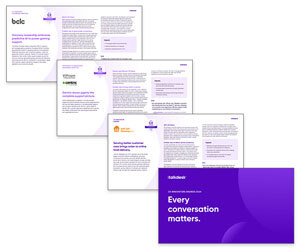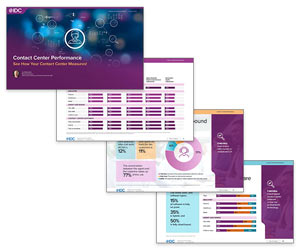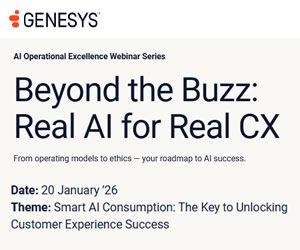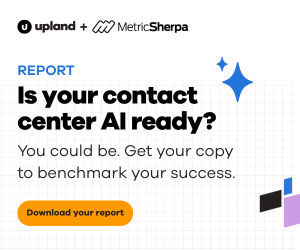Toussaint Celestin at Talkdesk dives into what multi-agent orchestration is, how it works in practice, and why it’s becoming a critical capability for businesses building advanced AI agent platforms.
Multi-agent orchestration operates at the centre of intelligent automation, where synchronising multiple AI agents can make the difference between chaos and streamlined success.
Companies are increasingly adopting AI to satisfy diverse customer experience (CX) needs. From answering customer queries to automating back-office tasks, they’re using virtual agents to streamline workflows and improve outcomes,
However, as dozens (or even hundreds) of AI-powered agents multiply across teams and functions, keeping them aligned becomes increasingly challenging.
Multi-agent orchestration provides the framework to coordinate AI systems, ensuring they communicate effectively, share context, and execute processes in harmony.
What is Multi-Agent Orchestration?
Multi-agent orchestration is the process of coordinating multiple AI agents to work together in a structured, goal-oriented way.
Rather than operating in isolation, orchestration ensures agents communicate, share context, and collaborate effectively to complete complex tasks or workflows.
At its core, multi-agent orchestration is a sum of its parts, an integrated system made up of several key features that together enable seamless collaboration, including:
- AI agents – Individual software programs or automation apps, designed to complete specific tasks autonomously, such as answering customer questions, handling transactions, or analyzing data.
- An orchestration system – The orchestration system, or agent, provides the underlying infrastructure to manage and coordinate agents, assign tasks, monitor progress, and resolve conflicts as needed to ensure desired outcomes.
- Communication methodology – How agents exchange information and instructions, using standardized or adaptive protocols to ensure clear, reliable exchanges.
- A knowledge base – The shared repository of information, rules, and context that all agents can access-keeping them aligned and informed about business processes, policies, and customer history
What’s the Difference Between Single-Agent vs Multi-Agent Orchestration
While single-agent and multi-agent orchestration share the goal of using AI to automate tasks and improve outcomes, they differ fundamentally in scope and complexity.
Both single-agent and multi-agent systems are designed to perform tasks autonomously, plan actions, and use external tools or data sources to produce responses.
Each type relies on structured workflows, access to information, and some level of decision-making capability to achieve results.
The key difference lies in how these systems handle complexity and collaboration. Single-agent orchestration focuses on coordinating a single AI agent’s workflow.
That agent can plan, call tools, and access external resources, including APIs or even other agents treated as “tools.”
In these cases, the secondary agent only delivers information; there’s no ongoing collaboration or shared strategy. The single agent remains the central planner, with others serving as resources rather than teammates.
Multi-agent orchestration coordinates a group of agents that actively collaborate. Each agent can model other agents’ goals, share context, and plan complementary actions.
Communication is richer and can be direct (messaging) or indirect (updating shared knowledge bases or environments). Instead of simply consuming information from another agent, each agent is aware of the broader team and works toward shared goals.
Often, one agent plays the role of ‘orchestrator’, managing individual agent assignments and coordinating exchanges, data flows, decisions, and outputs until the desired outcome is achieved.
Single-Agent vs Multi-Agent Orchestration: Which Approach is Best For you?
Single-agent orchestration is best suited for simpler, well-bounded tasks where one agent can manage the entire workflow.
For example, a customer service chatbot that answers FAQs or submits support tickets might only need access to APIs and databases without the complexity of coordinating with other agents.
In contrast, multi-agent orchestration is ideal for complex, multi-step processes that require flexibility, scalability, autonomous decision-making, and cross-functional coordination.
Examples include enterprise-level customer experience systems, supply chain management, or advanced decision-support platforms where multiple specialized agents must work in tandem, share knowledge, and adapt to changing conditions.
What Are The Different Types of Multi-Agent Orchestration?
Each type of multi-agent orchestration offers a unique way to coordinate agents depending on the complexity of the workflow and the need for control or flexibility. Here are the four common approaches:
Centralised Orchestration
In centralized orchestration, a single orchestrator manages and directs all agents. This model provides tight oversight and consistent execution, making it well-suited for controlled, predictable workflows.
However, it can become a bottleneck in large-scale systems or introduce single points of failure if the central orchestrator goes down.
Hierarchical Orchestration
Hierarchical orchestration adds layers of control by using a top-level orchestrator that delegates tasks to intermediate agents or sub-orchestrators.
This structure improves scalability and supports localized decision-making, as different levels can manage their own responsibilities while still aligning with overarching goals.
Adaptive Orchestration
Adaptive orchestration allows agents to adjust their roles, workflows, and priorities dynamically as conditions change.
This approach is effective for systems that need to handle real-time inputs or evolving requirements without predefined static plans, enabling greater flexibility and responsiveness.
Emergent Orchestration
Emergent orchestration relies on minimal predefined structure, encouraging agents to self-organize and collaborate in innovative ways.
Rather than following strict top-down plans, agents interact, share knowledge, and develop solutions collectively, making this model ideal for experimental environments or highly dynamic challenges where creativity and adaptability are essential.
What Does Multi-Agent Orchestration Accomplish?
Multi-agent orchestration helps organizations deliver on six key capabilities that support more efficient, flexible, and scalable outcomes.
Resolve Complex Customer Issues With Autonomous Decision-Making
Multi-agent orchestration enables specialized AI agents to make decisions and work together autonomously to handle even the most complex customer issues.
Instead of relying on multiple handoffs or manual interventions, these agents can assess context, adapt their actions on the fly, and deliver seamless, end-to-end resolutions.
By coordinating intelligently, they ensure customers receive faster, more consistent support, and human agents can focus on complex tasks or supervisory activities.
Add New Agents Easily For Fast Scalability
Multi-agent orchestration supports effortless scalability by making it easy to introduce new agents with specialized skills or tools without overhauling existing workflows. The system self-organizes, integrating these new agents so they can contribute immediately to broader objectives.
With low-code or no-code configuration options, organizations can reduce time-to-market and operational overhead, ensuring they can rapidly adapt to new challenges or customer needs while maintaining streamlined, effective processes.
Create a Single, Intelligent Layer of Unified Data
A unified, intelligent data layer combines structured records and unstructured conversational signals to provide instant context for AI agents.
This shared foundation gives agents the situational awareness to make better decisions, learn continuously, and deliver more personalized experiences.
This approach is essential for building agentic AI workflows where multiple agents can fluidly collaborate, adapt, and optimize outcomes without losing track of critical information.
Satisfy Compliance Regulations With Enterprise-Grade AI Guardrails
Enterprise-grade AI guardrails play a critical role in ensuring that multi-agent orchestration remains secure, trustworthy, and compliant with industry regulations.
Features such as prompt controls, data redaction, toxicity filtering, and human-in-the-loop oversight help maintain safe, policy-aligned interactions across all agents.
By embedding these safeguards directly into the orchestration layer, organizations can confidently automate complex workflows while meeting stringent security and compliance standards, protecting sensitive data, and upholding brand integrity.
Form a Unified, Digital Workforce
Agent-to-agent communication protocols and standardized context-sharing frameworks allow AI agents to access data across different platforms and systems.
With multi-agent orchestration, these agents collaborate across vendor or department boundaries, creating a truly unified digital workforce.
This interoperability ensures that processes remain connected and efficient, allowing organizations to deliver consistent, coordinated experiences.
Orchestrate a Team of Agents That Responds on the Fly
Multi-agent orchestration brings AI agents together as an agile, collaborative team that doesn’t just follow static instructions, it learns, adapts, and anticipates.
Instead of rigid workflows, these agents can respond to new information in real time, adjust their strategies on the spot, and find better ways to solve customer problems without constant reprogramming.
Multi-Agent Systems For Omnichannel Customer Support
Multi-agent orchestration makes it possible to deliver smooth, omnichannel service. Instead of relying on one all-purpose chatbot to do everything, these systems bring together a team of AI agents, each focused on a specific task, channel, or type of conversation, such as:
- Channel-specific communication – One agent may excel at empathetic voice interactions, while another handles web-based inquiries or text-based translations with precision.
- Context stitching across channels – AI agents can share and synchronize modalities (such as voice, digital, social, web, and SMS), and retain interaction data in memory across multiple interactions, ensuring a unified experience even when a customer switches channels.
- Post-interaction automation – After a customer call, for example, one agent can update CRM records, while another autonomously prepares and delivers follow-up communications using the customer’s preferred channel for notifications, order confirmations, or other relevant next steps, all without human intervention.
This level of orchestration enables organizations to deliver autonomous, personalized, and consistent service across every touchpoint.
It also helps agents focus on high-empathy, complex conversations, rather than toggling between systems or repeating tasks that AI can handle automatically.
Key Benefits of Multi-Agent Orchestration For Customer Experience
Customer experience is about anticipating needs, responding quickly, and making every interaction feel personal. Here’s how multi-agent orchestration helps teams deliver on that promise.
Support That Fits The Full Customer Journey
Customer issues rarely get solved in one quick back-and-forth. Whether it’s resolving a billing error or helping onboard a new client, there are usually several steps involved.
Multi-agent systems can divide and conquer – handling different parts of the journey, sharing updates, and adjusting on the fly to keep things moving smoothly.
Smarter Access to the Right Knowledge
With multiple agents working together, it’s faster to pull the best answer from different sources, whether that’s a CRM, knowledge base article, or internal tool.
Instead of surfacing the first available response, these agents can zero in on the most accurate and relevant one.
Personalised Experiences, Every Time
Multi-agent systems can tailor how they respond based on a customer’s profile or mood, choosing the right tone, timing, and next step. Whether someone’s frustrated or just in a hurry, the system adapts to meet them where they are.
Six Multi-Agent Orchestration Use Cases
Here are six practical use cases that show how multi-agent orchestration can solve real-world challenges and drive better outcomes.
Customer Service and Support
Multi-agent orchestration improves customer service by enabling multiple AI agents to work together across support channels.
Instead of relying on a single bot with limited capabilities, teams of specialized agents can handle everything from answering routine questions to resolving complex issues, handing off context smoothly as needed.
This coordinated approach reduces wait times, improves first contact resolution (FCR), and ensures consistent, high-quality service.
Supply Chain Logistics
Multi-agent orchestration offers a powerful advantage for supply chain logistics by bringing together teams of AI agents that can streamline supplier selection by evaluating cost, sustainability, and risk metrics, while automating processes like contracting and purchase ordering to reduce manual effort and improve accuracy.
By sharing a unified view of inventory levels and procurement criteria, agents help prevent disruptions and maintain smooth operations.
Financial Systems
In financial systems, specialized AI agents can perform continuous risk audits, detect unusual patterns for potential fraud, and respond to emerging threats to strengthen security and compliance.
With multi-agent orchestration, agents also streamline loan underwriting and compliance monitoring by managing high-volume, repetitive tasks quickly and accurately.
For a financial services contact centre, AI-powered assistants offer personalized financial advice, automate wealth management activities, and design tailored investment strategies in real time.
Healthcare Systems
In healthcare, AI agents can dramatically reduce administrative burdens by handling tasks like locating the right care provider or closest facility and streamlining billing, scheduling, resource allocation, and even automating processes such as prior authorizations or remote patient monitoring.
With multi-agent orchestration, these agents can share data across departments, ensuring seamless coordination and real-time access to patient information.
Beyond administrative efficiency, agents can assist in diagnostics, track patient vitals, manage medication processes, and flag potential health risks before they escalate.
Retail and E-Commerce
Multi-agent orchestration in retail involves coordinated AI agents handling everything from managing inventory and processing orders to delivering targeted marketing and providing self-service support.
For example, one agent might monitor stock levels and automatically trigger replenishment orders, while another personalizes product recommendations based on browsing history and purchase patterns.
In a retail contact centre, AI agents can respond instantly to customer inquiries, handle returns, and resolve issues without human intervention.
What Are The Core Benefits of Multi-Agent Orchestration?
Multi-agent orchestration delivers several clear benefits that help organizations operate more efficiently, including:
- Flexibility – Easily adapt to changing needs by adding, removing, or updating agents without overhauling the entire system.
- Scalability – Coordinate many agents to handle growing workloads and more complex tasks without sacrificing performance.
- Domain specialization – Deploy agents with targeted expertise, ensuring each part of a workflow is handled by the best-suited AI.
- Greater performance – Enable agents to share knowledge and strategies, improving learning, decision-making, and overall outcomes.
- Robustness – Distribute tasks among agents to avoid single points of failure and maintain consistent, reliable operations.
- Efficiency – Reduce manual effort and streamline processes by automating routine and complex tasks across multiple agents.
Are There Challenges to Multi-Agent Orchestration?
While multi-agent orchestration offers powerful advantages, it also comes with important challenges that organizations need to address to ensure success:
- Coordination complexity – Managing many autonomous agents requires sophisticated strategies and coordinated interdepartmental planning to keep workflows aligned and avoid process breakdowns.
- Communication overhead – Facilitating clear, efficient communication between agents without overloading the system or creating bottlenecks can be difficult.
- Conflict resolution – Agents with different goals may conflict, requiring well-designed mechanisms to resolve disputes and maintain smooth operations.
- Unpredictable behaviour – Autonomous agents can act in unexpected ways, especially in decentralized setups, which can make monitoring and controlling outcomes more challenging.
With the right technology and effective management practices, organizations can harness multi-agent orchestration to build more adaptive, collaborative, and resilient AI solutions.
This blog post has been re-published by kind permission of Talkdesk – View the Original Article
For more information about Talkdesk - visit the Talkdesk Website
Call Centre Helper is not responsible for the content of these guest blog posts. The opinions expressed in this article are those of the author, and do not necessarily reflect those of Call Centre Helper.
Author: Talkdesk
Reviewed by: Rachael Trickey
Published On: 7th Oct 2025
Read more about - Guest Blogs, Talkdesk, Toussaint Celestin




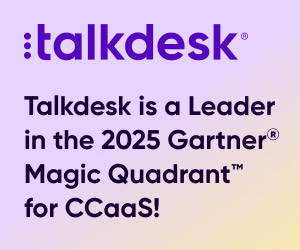

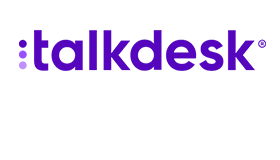 Talkdesk is a global customer experience leader for customer-obsessed companies. Our contact center solution provides a better way for businesses and customers to engage with one another.
Talkdesk is a global customer experience leader for customer-obsessed companies. Our contact center solution provides a better way for businesses and customers to engage with one another. 





